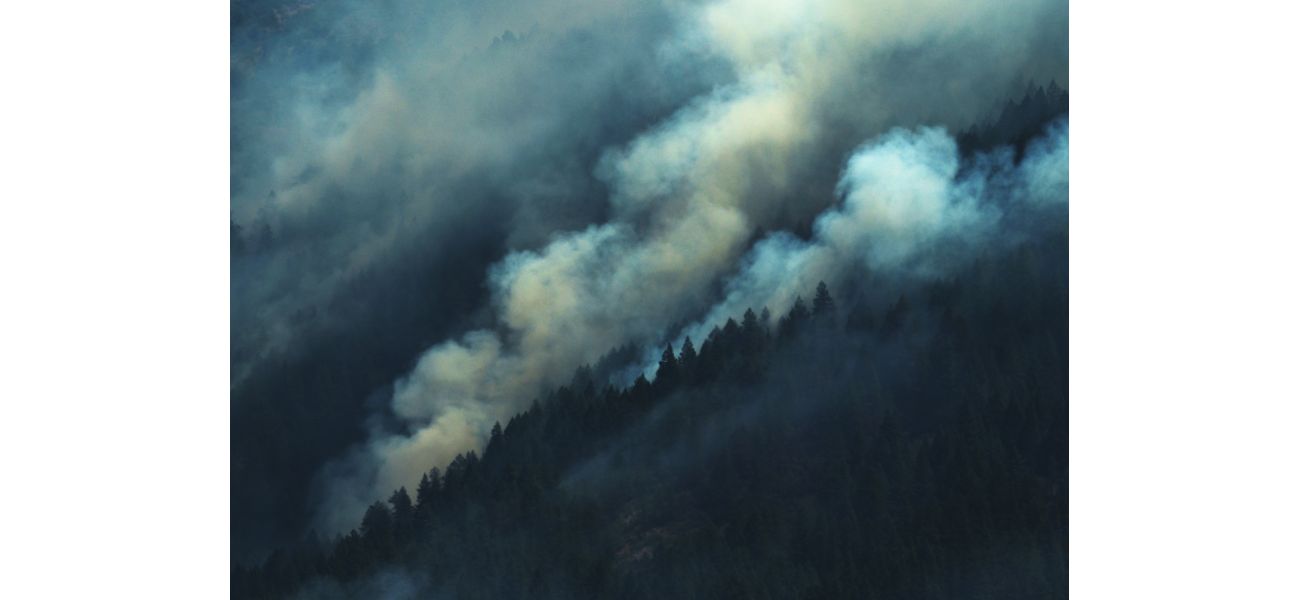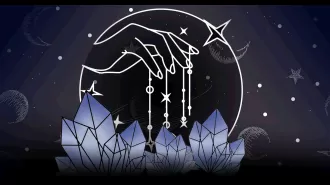Colorado is facing increasingly severe wildfires and state leaders are taking action to combat them.
Fire officials in Colorado are searching for improved methods of preventing and combating increasingly intense wildfires.
November 10th 2024.

Colorado is a state that bears the scars of numerous wildfires, both visible and unseen. These fires have left their mark on the land and the people who call it home. One such fire, the 1994 South Canyon fire near Glenwood Springs, is still considered the deadliest wildfire in the state's history. It claimed the lives of 14 firefighters and sparked widespread changes in the field of fire safety and prevention.
But despite these efforts, the reality of Colorado's wildfires is changing. While they may be less deadly now, they are becoming more extreme and challenging to contain. As Vaughn Jones, the wildland fire management section chief for the Colorado Division of Fire Prevention and Control, puts it, the difference between wildfires today and 30 years ago is "almost mind-boggling." These fires are not just a natural resource problem anymore, but a public safety issue that affects all Coloradans and their way of life.
In the past, a few thousand-acre wildfire was considered a big deal. But now, fires that span over 100,000 acres, such as the 2020 East Troublesome fire, have become the norm. This fire destroyed over 500 homes and killed two people in a matter of hours, despite starting in October when wildfires are less likely to occur. This is in stark contrast to the South Canyon fire, which started in July and was initially believed to be slow-burning and not a cause for concern.
The growing size and intensity of wildfires can be attributed to a combination of factors, including climate change and a growing population in fire-prone areas. According to state and local fire officials, more people are moving into areas where forests and neighborhoods are intertwined, making it more challenging to prevent and fight wildfires.
The impact of these fires goes beyond the physical damage. The behavior of the fires themselves has also changed drastically over the years. Fire storms, driven by strong winds and fueled by drought-stricken forests, have become more common. And while the South Canyon fire remained within a few square miles, the East Troublesome fire crossed over 300 square miles, jumping the Continental Divide despite a lack of fire fuel at higher elevations.
Adapting to these extreme wildfires is a complex issue with no easy solution. Daniel Beveridge, a fire, fuels, and watershed manager for the Colorado State Forest Service, believes that climate change and unhealthy forests, caused in part by the exclusion of fire, are major contributing factors. He explains that until the forest ecosystems can be restored to a more natural state, these issues will persist.
In conclusion, Colorado's wildfire risk is growing, and it will take a collaborative effort to address and mitigate the impact of these disasters. While the scars of past wildfires may still be visible on the land, it is essential to learn from them and find new and better ways to prevent and fight future fires.
Colorado has a long history of wildfires, and it's a history that is still visible today. The state is marked by the scars of countless fires, some still healing while others remain a constant reminder of the dangers of these natural disasters. In particular, the South Canyon fire of 1994 stands out as the deadliest wildfire in Colorado's history, claiming the lives of 14 firefighters and leaving a lasting impact on the state's approach to fire safety.
This tragedy, along with other devastating wildfires, has prompted significant changes in the way that fire officials approach prevention and response. However, despite these efforts, Colorado is facing a new challenge as wildfires become more extreme and difficult to contain. As Vaughn Jones, the wildland fire management section chief for the Colorado Division of Fire Prevention and Control, puts it, the difference between wildfires today and those 30 years ago is "almost mind-boggling."
In the past, a few thousand acres of wildfire were considered a significant event, but now, entire towns are being evacuated and major highways are being shut down. What was once seen as a natural resource problem has now become a public safety issue that affects all Coloradans and their way of life. Unfortunately, this trend is only expected to continue as climate change and population growth contribute to a higher risk of wildfires.
The South Canyon fire, which initially seemed like a minor and manageable blaze, quickly grew out of control due to shifting weather conditions and extreme fire behavior. It serves as a cautionary tale of the deadly consequences that can arise when leadership and communication are lacking in the face of a wildfire. However, even this catastrophic event pales in comparison to more recent wildfires, such as the 2020 East Troublesome fire, which destroyed over 500 homes and killed two people in a matter of hours.
The increasing severity and frequency of wildfires in Colorado can also be attributed to climate change and the unhealthy state of many forests. The practice of fire exclusion has disrupted the natural balance of these ecosystems, making them more vulnerable to extreme fires. As Daniel Beveridge, a fire, fuels, and watershed manager for the Colorado State Forest Service, explains, until these forests are restored to a healthier state, these issues will persist.
Moreover, the growing population in Colorado means that more people are living in areas that are at high risk for wildfires. As a result, fire officials must not only focus on preventing and fighting fires but also on educating and preparing residents for the potential dangers. It is a complex problem that requires a multifaceted approach, but one thing is clear: Colorado must adapt to the new reality of increasingly extreme wildfires in order to protect its people and its natural resources.
But despite these efforts, the reality of Colorado's wildfires is changing. While they may be less deadly now, they are becoming more extreme and challenging to contain. As Vaughn Jones, the wildland fire management section chief for the Colorado Division of Fire Prevention and Control, puts it, the difference between wildfires today and 30 years ago is "almost mind-boggling." These fires are not just a natural resource problem anymore, but a public safety issue that affects all Coloradans and their way of life.
In the past, a few thousand-acre wildfire was considered a big deal. But now, fires that span over 100,000 acres, such as the 2020 East Troublesome fire, have become the norm. This fire destroyed over 500 homes and killed two people in a matter of hours, despite starting in October when wildfires are less likely to occur. This is in stark contrast to the South Canyon fire, which started in July and was initially believed to be slow-burning and not a cause for concern.
The growing size and intensity of wildfires can be attributed to a combination of factors, including climate change and a growing population in fire-prone areas. According to state and local fire officials, more people are moving into areas where forests and neighborhoods are intertwined, making it more challenging to prevent and fight wildfires.
The impact of these fires goes beyond the physical damage. The behavior of the fires themselves has also changed drastically over the years. Fire storms, driven by strong winds and fueled by drought-stricken forests, have become more common. And while the South Canyon fire remained within a few square miles, the East Troublesome fire crossed over 300 square miles, jumping the Continental Divide despite a lack of fire fuel at higher elevations.
Adapting to these extreme wildfires is a complex issue with no easy solution. Daniel Beveridge, a fire, fuels, and watershed manager for the Colorado State Forest Service, believes that climate change and unhealthy forests, caused in part by the exclusion of fire, are major contributing factors. He explains that until the forest ecosystems can be restored to a more natural state, these issues will persist.
In conclusion, Colorado's wildfire risk is growing, and it will take a collaborative effort to address and mitigate the impact of these disasters. While the scars of past wildfires may still be visible on the land, it is essential to learn from them and find new and better ways to prevent and fight future fires.
Colorado has a long history of wildfires, and it's a history that is still visible today. The state is marked by the scars of countless fires, some still healing while others remain a constant reminder of the dangers of these natural disasters. In particular, the South Canyon fire of 1994 stands out as the deadliest wildfire in Colorado's history, claiming the lives of 14 firefighters and leaving a lasting impact on the state's approach to fire safety.
This tragedy, along with other devastating wildfires, has prompted significant changes in the way that fire officials approach prevention and response. However, despite these efforts, Colorado is facing a new challenge as wildfires become more extreme and difficult to contain. As Vaughn Jones, the wildland fire management section chief for the Colorado Division of Fire Prevention and Control, puts it, the difference between wildfires today and those 30 years ago is "almost mind-boggling."
In the past, a few thousand acres of wildfire were considered a significant event, but now, entire towns are being evacuated and major highways are being shut down. What was once seen as a natural resource problem has now become a public safety issue that affects all Coloradans and their way of life. Unfortunately, this trend is only expected to continue as climate change and population growth contribute to a higher risk of wildfires.
The South Canyon fire, which initially seemed like a minor and manageable blaze, quickly grew out of control due to shifting weather conditions and extreme fire behavior. It serves as a cautionary tale of the deadly consequences that can arise when leadership and communication are lacking in the face of a wildfire. However, even this catastrophic event pales in comparison to more recent wildfires, such as the 2020 East Troublesome fire, which destroyed over 500 homes and killed two people in a matter of hours.
The increasing severity and frequency of wildfires in Colorado can also be attributed to climate change and the unhealthy state of many forests. The practice of fire exclusion has disrupted the natural balance of these ecosystems, making them more vulnerable to extreme fires. As Daniel Beveridge, a fire, fuels, and watershed manager for the Colorado State Forest Service, explains, until these forests are restored to a healthier state, these issues will persist.
Moreover, the growing population in Colorado means that more people are living in areas that are at high risk for wildfires. As a result, fire officials must not only focus on preventing and fighting fires but also on educating and preparing residents for the potential dangers. It is a complex problem that requires a multifaceted approach, but one thing is clear: Colorado must adapt to the new reality of increasingly extreme wildfires in order to protect its people and its natural resources.
[This article has been trending online recently and has been generated with AI. Your feed is customized.]
[Generative AI is experimental.]
0
0
Submit Comment





